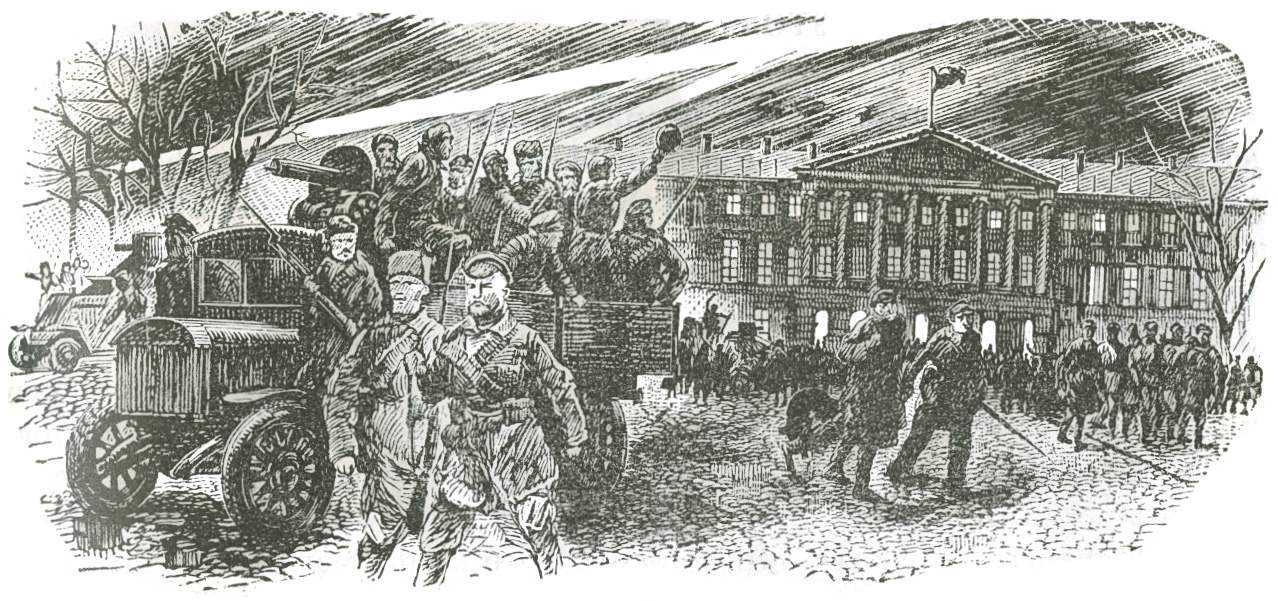


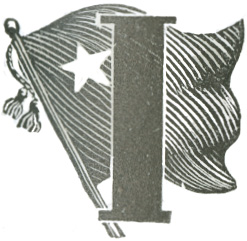 mmediately after the Congress of Soviets of the Northern Region Lenin summoned the leaders of the Bolshevik military organisation—N. I. Podvoisky and others—and asked to be informed to what degree the soldiers and sailors were prepared for the insurrection. The leaders of the military organisation reported that the sailors could be relied upon absolutely; the fleet would go into action immediately the Bolsheviks gave the order. Such was the temper of the sailors at Helsingfors and the other naval bases in the Baltic.
mmediately after the Congress of Soviets of the Northern Region Lenin summoned the leaders of the Bolshevik military organisation—N. I. Podvoisky and others—and asked to be informed to what degree the soldiers and sailors were prepared for the insurrection. The leaders of the military organisation reported that the sailors could be relied upon absolutely; the fleet would go into action immediately the Bolsheviks gave the order. Such was the temper of the sailors at Helsingfors and the other naval bases in the Baltic.
Podvoisky, reporting on the sentiments prevailing among the troops of the Petrograd garrison, stated that the soldiers were openly in sympathy with the insurrection.
Some of the officials of the Bolshevik military organisation, the “voyenki,” or “military committee-ites,” as they were called, displayed excessive caution and hindered the preparations for the insurrection. They urged that the armed insurrection should be postponed for a while in order to gain time to prepare the army and the provinces and to dispatch Commissars to the front, to Moscow, Kiev, Saratov, Ekaterinoslav and Nizhni-Novgorod.
Lenin, however, resolutely rejected all arguments in favour of putting off the insurrection and strongly stressed the point that postponement would enable the enemy to organise for the defeat of all the revolutionary forces. He demanded that preparations be accelerated in order to forestall the counter-revolutionaries, and he personally took up the work of organising the insurrection. He summoned Stalin and Sverdlov to his secret residence, questioned them concerning the preparedness of the Party organisations and gave necessary instructions. He also summoned Podvoisky and other members of the Military Revolutionary Committee and enquired about the technical side of the insurrection, their contacts with the troops, the temper prevailing among them, the composition of the Red Guards and the feeling in the working-class districts. He imbued his assistants with courage and energy, and under his direct, virile and militant leadership the work of preparing for the armed insurrection made rapid progress.
In Petrograd, district military organisations had been set up already at the end of September. These organisations enrolled instructors for the Red Guards, procured arms and conducted propaganda in the regiments. They also made a list of all the military schools in the city and conducted propaganda work among the machine-gunners, armourers and other lower rank categories attached to the cadet units. In the Petrograd District they reconnoitred the approaches to the Fortress of Peter and Paul and to the arsenal, where large quantities of arms were stored. In the fortress they found from 10 to 15 politically conscious soldiers who were ready to co-operate with the Bolsheviks. The Arsenal Workers’ and Soldiers’ Committee was dominated by the Socialist-Revolutionaries and Mensheviks, but a considerable amount of propaganda work was conducted among the soldiers and workers at the arsenal with the assistance of the Bolsheviks in the fortress. The compromisers were eventually isolated and the Bolsheviks began secretly to supply the Red Guards and the revolutionary regiments of the garrison with arms obtained from the arsenal.
The task of directing the practical work in preparing for the insurrection devolved upon the legally functioning Military Revolutionary Committee of the Petrograd Soviet. This Committee had been formed at the time when the Kornilovites had attempted to withdraw the revolutionary troops from Petrograd and thereby disarm the capital. The Headquarters Staff of the Petrograd Military Area had issued an order to re-group a section of the Petrograd garrison and to dispatch it to the front on the plea of urgent military necessity.
On October 9, the day on which this order was issued, the Mensheviks on the Executive Committee of the Petrograd Soviet, secured the adoption of a resolution calling for the organisation of a committee to facilitate the withdrawal of the garrison from the capital.
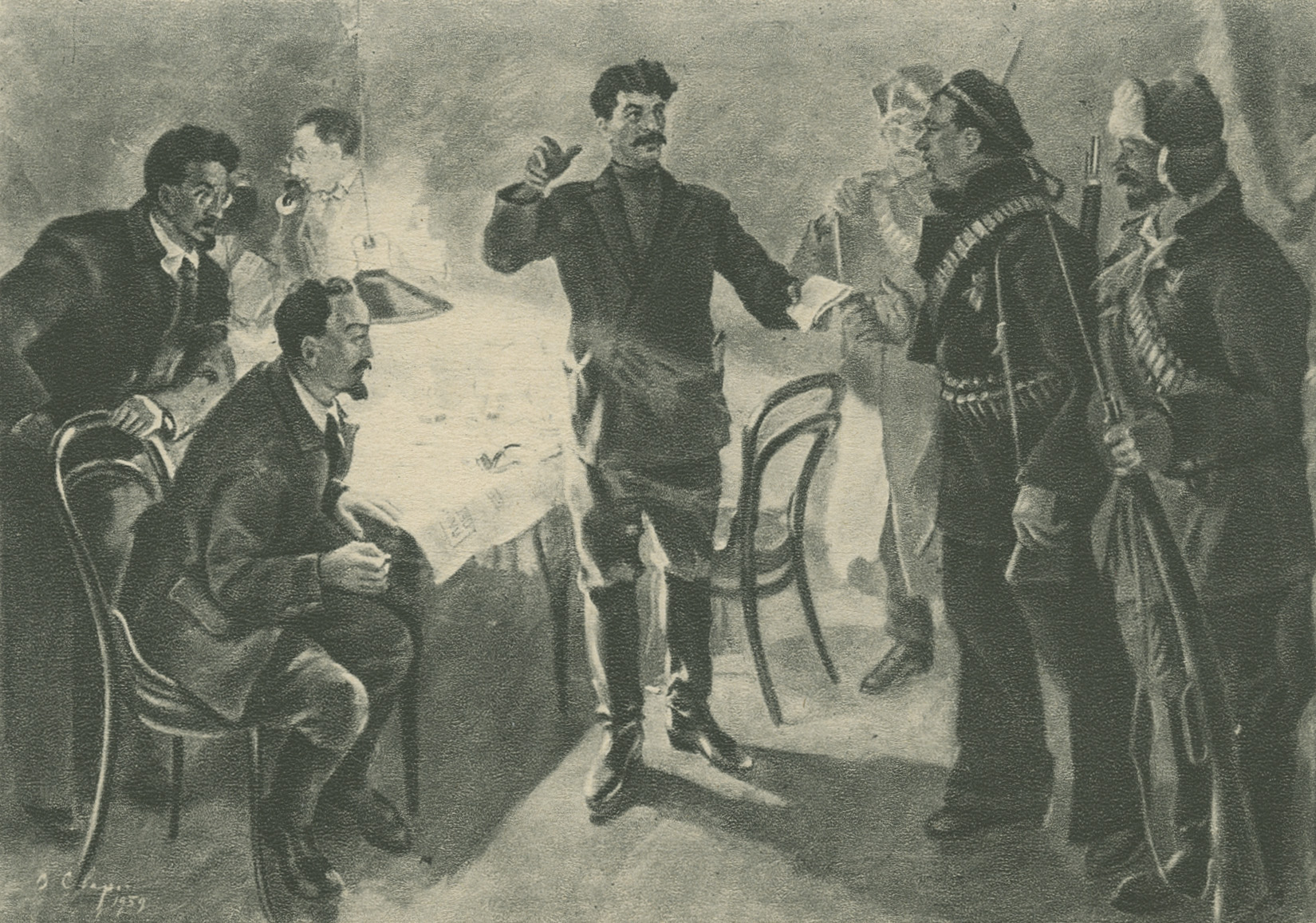
The full meeting of the Petrograd Soviet held that same evening, however, rejected this Menshevik resolution, and on a motion of the Bolsheviks decided to form a Military Revolutionary Committee for the defence of Petrograd and to counteract the attempt of Staff Headquarters of the Petrograd Military Area to withdraw the troops from the capital.
This was an open challenge by the Bolsheviks to the counter-revolutionaries.
On October 12 the regulations governing the functions of the Military Revolutionary Committee were adopted at a closed session of the Executive Committee of the Petrograd Soviet. These functions were defined as follows: to determine the minimum of forces necessary for the defence of the capital and, therefore, to be retained; to maintain communication with the Central Committee of the Baltic Fleet and the garrison in Finland; to keep an exact record of the strength of the Petrograd garrison; to take measures to prevent rioting in the capital, to arm the workers and maintain revolutionary discipline.
After the Central Committee had adopted its decision on armed insurrection it set up in all the districts of the capital secret staffs to make preparations for the insurrection. These staffs consisted of the leader of the military organisation in each district, the chief of the Red Guard, and the Chairman of the District Soviet if he was a Bolshevik. Working under the direction of the Military Revolutionary Committee, these district staffs energetically set to work to inspect the Red Guard in their respective districts: they took note of the buildings and strongholds which were to be captured during the insurrection, and enrolled commanders for the revolutionary detachments from among non-commissioned officers and junior officers of the army.
To improve contact with the provinces and to afford the local Party organisations practical assistance the Central Committee of the Bolshevik Party dispatched its members to the various regions to convey to the local organisations the Party’s instructions and to inform them of the general plan for the insurrection. They also collected information concerning the military and technical preparedness of the local organisations for the insurrection so that the centre might know on which organisations it could rely, and to what degree, when the insurrection commenced.
On the instructions of the Central Committee a report on the state of preparedness for the insurrection was made at a meeting of the Petrograd Committee of the Bolshevik Party.
On October 14, the Moscow Regional Bureau of the Bolshevik Party instructed all the organisations within its province to go ahead with practical preparations for the insurrection, to organise fighting detachments of the Red Guard, to establish contacts with the soldiers in the various garrisons, and to set up committees to direct operations.
The Central Committee sent a representative to Saratov to acquaint the Bolshevik organisation there with the preparations for the insurrection. At a small gathering of leading Party members this representative reported on the plans of the Central Committee, enquired about the temper of the masses and instructed the organisation to accelerate the military and technical preparations.
The representative of the Central Committee who attended a Special Congress of Latvian Bolsheviks held in the city of Valk, conveyed instructions to the Latvian comrades to hold up troops that might be recalled from the front by the Provisional Government, and also to prepare for the dispatch of detachments to Petrograd whenever the Military Revolutionary Committee called for such. The Latvian Bolsheviks formed a secret Military Revolutionary Committee and decided to prepare two Lettish regiments to be sent to the aid of Petrograd. The other regiments were to take up positions to prevent any military unit recalled from the front by the Provisional Government from passing through to Petrograd. All the regiments pledged themselves to support the Soviets’ struggle for power.
On the urgent representations of the Central Committee, a Military Revolutionary Committee was also formed in the Twelfth Army. This Committee established communications with Petrograd and from there received definite instructions how to act when the insurrection started.
The Central Committee took advantage of the All-Russian Congress of the Union of Cities which was held in Moscow to establish contacts with the Bolshevik representatives from the provinces. At a meeting of the Bolshevik group attending the Congress the Central Committee’s representatives conveyed the Party’s instructions. After hearing these reports the meeting discussed the practical measures that could be taken to assist the centre in the event of power being captured in Moscow and Petrograd. The meeting also laid down the definite functions that were to be carried out by the different organisations. Tula was to supply arms. Ivanovo-Voznesensk, Kolomna and other districts adjacent to Moscow were to render direct assistance by sending armed detachments.
The Central Committee of the Bolshevik Party anticipated that the Socialist-Revolutionaries and Mensheviks who predominated in the food committees would attempt, after the victory of the insurrection, to dislocate the food supply in order to crush the revolution by starvation. Consequently, measures were taken to prevent this long before the insurrection. The Bolsheviks in Ufa, for example, were instructed to prepare trainloads of grain for dispatch to the capital immediately after the insurrection.
The Ufa Bolsheviks immediately set to work to carry out these instructions. The local Gubernia Food Committee, of which A. D. Tsurupa, a Bolshevik, was the head, made arrangements to come to the speedy assistance of Petrograd. Messengers were sent to the various industrial enterprises in the Urals to warn the organisations there of the impending events.
In addition to the urgent task of supplying Petrograd with Siberian grain the Urals Bolsheviks also prepared to render the revolution armed assistance.
Lenin had drawn up the plan of insurrection in the capitals, but, great strategist that he was, he allowed for the possibility of the insurrection failing in Petrograd and Moscow. In that event, the Urals were to take up the struggle for power. As the Uralsky Rabochy, the organ of the Urals Regional Committee of the Bolshevik Party, wrote at the time:
“The entire revolutionary army in the province must put itself in a state of complete fighting preparedness so as to be able, if necessary, to go to the aid of the revolutionary Petrograd vanguard, or perhaps, in the event of the defeat of the Petrograd workers, to take the field against the advancing counter-revolution here.”[1]
The Central Committee of the Bolshevik Party gave close attention to the matter of capturing the approaches to the capital. It sent its representatives to all the railway junctions in the region with the warning that the Provisional Government would attempt to seize these junctions in order to ensure the movement of troops.
On the instructions of the Central Committee, representatives of the Petrograd Military Revolutionary Committee visited Luga, Dno, Pskov and other towns to investigate the preparedness of the local organisations for action and to instruct them to prevent troops from the front from being moved against revolutionary Petrograd.
A secret code was drawn up to be used in informing the Party organisations of the date fixed for the insurrection. The local organisations were informed that the Central Committee would advise them in good time of the favourable moment to start operations and indicate the most expedient method of procedure.
The remarkable discipline, precise organisation and speedy mutual assistance that were achieved were due to the warning uttered by the Central Committee to the local organisations not to act on their own accord, but to subordinate their operations to the general instructions.
It was this co-ordination of all operations with action at the centre that explains why many towns came out against the Provisional Government either on the very day that victory was achieved in Petrograd, or the day after. Such organisation and co-ordination, precision and mutual assistance had never been achieved in any previous insurrection or revolution. This organisation and discipline were secured by the Central Committee of the Bolshevik Party under the leadership of Lenin and Stalin.
There was not a single question affecting the insurrection which the Central Committee did not discuss beforehand. The general plan, communications, security of the rear and the slogans were all carefully prepared.
Special attention was paid to the organisation of the fighting forces of the insurrection, namely, the Red Guard.
The resolution on the insurrection that was adopted called for thorough military, technical and organisational preparation.
“History,” wrote Lenin, “has now made the military question the fundamental political question.”[2]
In some quarters the importance and significance of the military aspect of the insurrection were underrated. This was undoubtedly the effect of the influence of Menshevik, Social-Democratic opportunism, one of the characteristic features of which was, and still is, dread of arming the workers and of real revolution. This was one of the most pronounced characteristics of the traitor Trotsky.
Neglecting the military-technical preparations for the insurrection, however, meant courting certain defeat. Lenin did his utmost to impress upon the members of the Central Committee, the Petrograd Committee and the Moscow Committee the importance of this aspect of the preparations and addressed himself directly to individual organisations and comrades on the question.
All this time the compromising Soviets in the important centres had been hindering the organisation of the fighting forces of the revolution. The Red Guard units that existed had been formed semi-legally in the factories by the lower Soviet bodies and local committees of the Bolshevik Party. As a result of the pressure brought to bear by the Bolsheviks, however, the Soviets began to take over the work of organising the armed forces. On October 16 the Executive Committee of the Petrograd Soviet declared:
“1) The organisation of a workers’ guard, whose direct function is to combat the counter-revolution and to protect the gains of the revolution, is an urgent task of the moment, and 2) . . . all the work of organising the workers’ guard and of giving it political direction will be taken over by the Petrograd Soviet of Workers’ and Soldiers’ Deputies.”[3]
The example of the Petrograd Soviet was followed by the Soviets in other cities. Special organisers were appointed to form Red Guard units and funds and arms were allocated for the purpose. The detachments of the proletarian army grew rapidly everywhere.
Following the example of Petrograd, the Soviets in the provinces and at the front formed Military Revolutionary Committees to direct operations during the insurrection. The Party organisations sent their best forces to these committees and strengthened the Executive Committees of the Soviets.
Eventually all the preparations for the insurrection were completed. The Central Committee of the Bolshevik Party had drawn up its general plan of operations. A Military Revolutionary Committee had been formed to act as the General Staff of the insurrection. The Red Guard—the main fighting force—had been mobilised. The provinces had been warned. A secret code had been drawn up. Reliable communications had been established. The duties of the different Party organisations had been assigned. The state of all the fighting forces had been ascertained. The capture of the railway junctions had been provided for. Socialist-Revolutionaries and Mensheviks had been isolated from the masses. Bolshevik slogans had long become the slogans of the proletariat and of all working people. The Bolshevik Party, led by the Central Committee, was ready for the decisive battle for power.
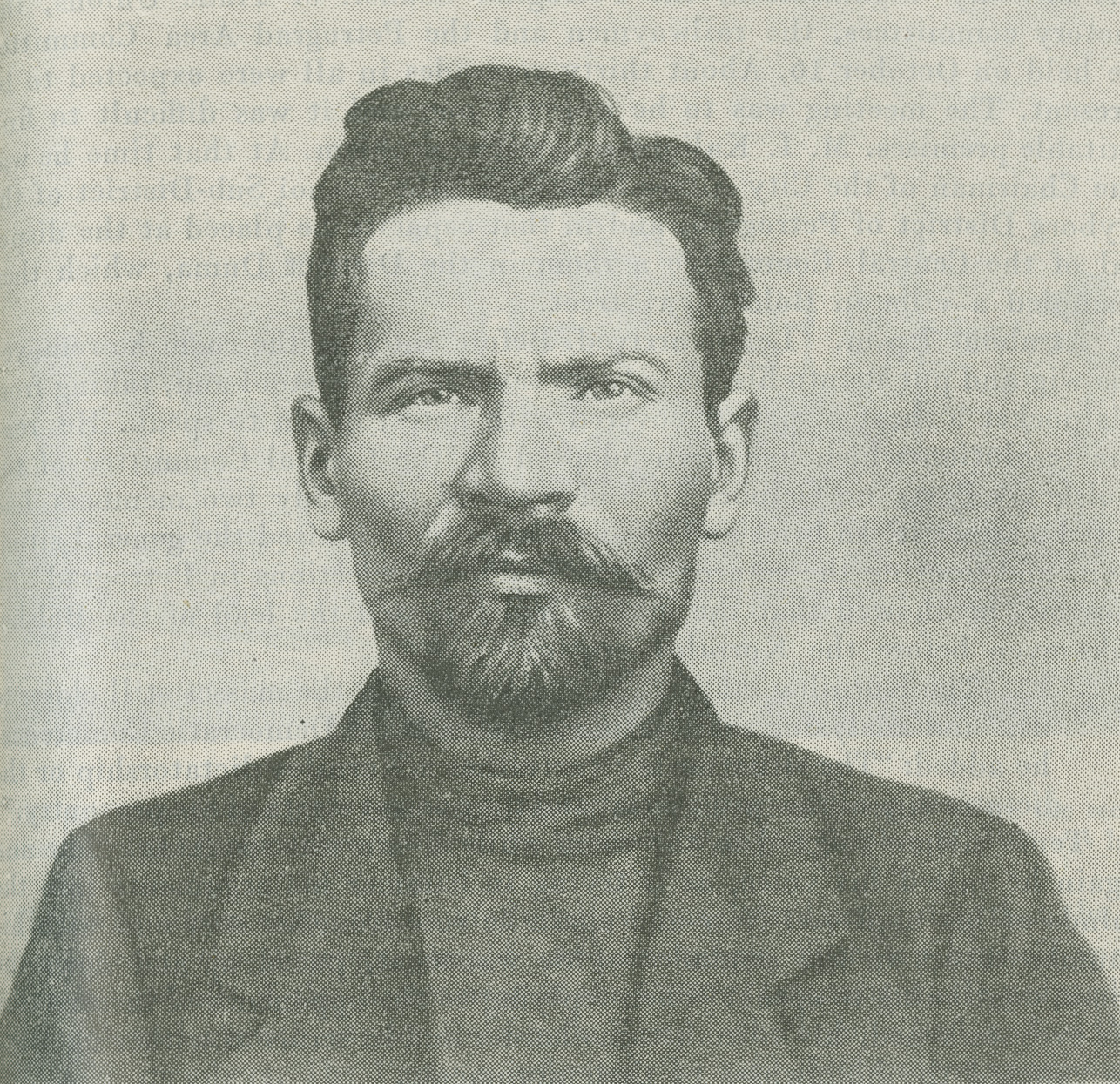
Lenin had not set a definite date for the insurrection. It might start any day, but certainly before the opening of the Congress of Soviets, which the Socialist-Revolutionary and Menshevik Central Executive Committee had fixed for October 20.
In order to verify the progress made in the preparations for the insurrection and to warn a larger circle of Party workers of its imminence, Lenin proposed that a joint meeting of the members of the Central Committee of the Party and representatives of the Petrograd Committee of the Party, the military organisation, the Petrograd Council of Trade Unions, the factory committees, the railwaymen and the Petrograd Area Committee be held on October 16. About thirty comrades in all were expected to be present. The meeting was to be a secret one and it was difficult to find suitable premises. M. I. Kalinin solved the problem. At that time he was the Chairman of the City Administration of the Lesnoi Sub-District of the Vyborg District of Petrograd, and in that capacity he placed at the disposal of the Central Committee a room in the District Duma, which then occupied a villa in Bolotnaya Street.
At about 7 p.m. Lenin arrived. Before entering the room he removed his wig and put it into his pocket. He sat down on a stool and, taking from his pocket a sheaf of papers covered with notes, began to speak. He read the resolution which had been adopted by the Central Committee of the Bolshevik Party on October 10 and reported that only two members had voted against it. In brief and concise terms he appraised the general situation, and quoting the returns of the municipal elections in Petrograd and Moscow, he showed that the masses had followed the lead of the Bolsheviks even before the Kornilov mutiny.
“The Kornilov mutiny,” he said, “brought the masses still closer to us,” and analysing the relation of forces at the Democratic Conference, he added: “The situation is clear: either a Kornilov dictatorship or the dictatorship of the proletariat and the poorest strata of the peasantry.”[4]
Tense silence reigned in the room while Lenin was speaking. Now and again he raised his voice, as if trying to hammer his arguments into the minds of his auditors. Now and again he rose from his seat and with his thumbs thrust in the armholes of his waistcoat, paced up and down the room, continuing to speak. When replying to the opponents of insurrection his eyes darkened, his voice became harder and in terms of withering scorn he exposed the hollowness of their arguments.
After reviewing the situation within the country, Lenin proceeded to appraise the international situation. It would be more difficult to start a revolution in Western Europe than in Russia, he said; but the mutiny which had started in the German navy showed what great progress the revolutionary movement was making even in a country like Germany. If we started the insurrection at once we would have the whole of proletarian Europe on our side. Concluding his report he said:
“. . . the bourgeoisie wishes to surrender Petrograd. We can avert this only by taking Petrograd into our hands. The conclusion from all this is clear, namely, that the armed uprising of which the Central Committee resolution speaks is on the order of the day. . . . The political analysis of the class struggle, both in Russia and in Europe, proves the necessity of a most decisive and most active policy; this can mean only armed insurrection.”[5]
Everybody in the room had been listening to Lenin’s speech with bated breath, and for several minutes after he had finished nobody uttered a word. Then the clear calm voice of Sverdlov was heard proposing that the reports from the districts should now be taken. Sverdlov himself spoke first on behalf of the Secretariat of the Central Committee. He pointed to the colossal growth of the Bolshevik Party, which now had no less than 400,000 members. The Party’s influence, he said, had grown enormously in the army, in the navy and in the Soviets. He concluded his report with a statement regarding the mobilisation of the counter-revolutionary forces.
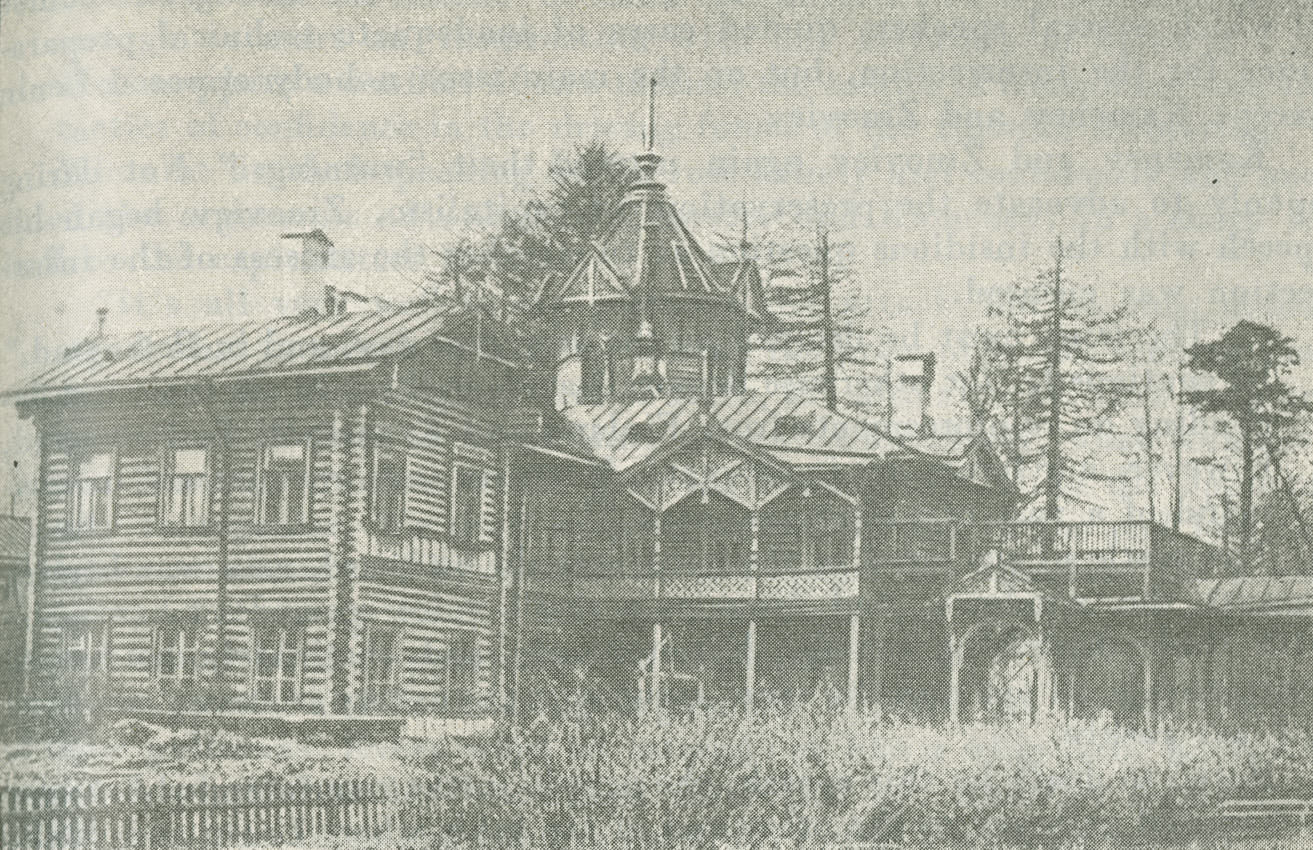
Sverdlov was followed by comrades who spoke on behalf of the Petrograd Committee of the Party and of the military organisation, and then reports were heard from the trade unions and the factory committees. Special emphasis was laid on the temper prevailing among the railwaymen and post and telegraph workers. The reporters stated that the junior staff of the Post Office accepted the lead of the Bolsheviks. The postmen, for example, were ready to seize the General Post Office at the decisive moment. The railwaymen reported that the bulk of the transport workers were incensed against the bourgeois government. All these reports served to confirm Lenin’s conclusion that the masses were ripe for insurrection. Sverdlov rounded off these reports by stating:
“In connection with the Central Committee’s resolution, steps have been taken to ascertain the possibility of insurrection in Moscow.”[6]
The reports were then thrown open for discussion, during the course of which several speakers quoted cases of inadequate technical preparations for the insurrection, but on the main issue nobody opposed Lenin except Kamenev and Zinoviev.
Kamenev and Zinoviev again uttered their “warnings.” Not daring openly to advocate the preservation of capitalism, Zinoviev began his speech with the insidious question as to whether the success of the insurrection was ensured.
“The issue must be decided on the very first day, and in Petrograd,” he continued, “for otherwise demoralisation will set in. It is no use depending on reinforcements from Finland and Kronstadt. In Petrograd, however, our forces are inadequate. Moreover, our enemies are in command of a vast organisational staff.”[7]
The rustle of the trees in the garden could be heard, rain was beating against the windows, and Zinoviev’s shrill voice seemed to harmonise with these depressing sounds. Monotonously and obstinately he harped continuously on one and the same argument: the enemy is strong, we must not act rashly.
Bored to death by this speech, the people in the room stopped listening to him and gathered at the other end of the table where Lenin and Stalin were seated. Soon his part of the room was deserted and he found himself alone with Kamenev.
For reasons of secrecy Lenin, Stalin and Sverdlov had not in their reports related all that had been done during the preceding week. Kamenev took advantage of this, and throwing off all restraint, made a slanderous attack upon the Party leadership.
“A week has passed since this resolution was adopted,” he said, “and that is exactly why it shows how an insurrection should not be made. During this week nothing has been done, and this has only served to make things worse. The results of this week show that there are now no grounds for insurrection.”[8]
Two days later Lenin wrote the following concerning Kamenev’s outburst:
“I could not refute that because I could not tell what had really been done.”[9]
Virtually advocating the preservation of bourgeois democracy Kamenev openly took up a Menshevik position. He treated the question of insurrection in the same way as a schoolteacher treats a writing exercise; he wanted everything to be straight on the line, and nicely rounded, that all the weapons needed should be immediately available, that all the enemy’s plans should be known beforehand, and that victory should be absolutely guaranteed. Like the Mensheviks, he slanderously accused Lenin of being a Blanquist and a conspirator.
“Speaking from the social aspect,” he droned, “the crisis has matured; but there is nothing to prove that we must go into battle before the 20th. It is not a matter of ‘now or never’. . . . We are not strong enough to start an insurrection with any certainty of victory. . . . We have here a conflict of two tactics: the tactics of conspiracy and the tactics of confidence in the driving forces of the Russian revolution.”[10]
When he finished speaking Stalin rose calmly and confidently and analysed the arguments advanced by Zinoviev and Kamenev. In a sharp rebuff to the capitulators he said:
“It’s all very well to say postpone the attack, but we must understand what is meant by attack; raising the price of bread, sending Cossacks to the Don Region, and so forth, are also attacks. How long are we to wait if there is no military attack? Objectively, what Kamenev and Zinoviev propose would give the counter-revolution the opportunity to organise. We shall keep on retreating and in the end lose the entire revolution. Why should we not ensure for ourselves the possibility of choosing the day and the conditions and deprive the counter-revolution of the opportunity to organize?”[11]
Stalin’s stern and devastating arguments exposed the craven designs of these poltroons. Every word he uttered cut like a whip-lash. Kamenev nervously plucked at his beard and shrivelled up. Zinoviev fidgeted in his corner of the room and tried to interrupt Stalin’s scathing speech.
Stalin then went on to deal with the international situation and showed that international relations were extremely favourable. In conclusion he stated:
“There are two policies: one is heading towards the victory of the revolution and looks to Europe: the other has no faith in the revolution and counts on being only an opposition. The Petrograd Soviet has already taken the path of insurrection by refusing to sanction the withdrawal of the troops. The navy has already risen, in so far as it has gone against Kerensky.”[12]
One after another the members of the Central Committee rose to speak in opposition to Zinoviev and Kamenev. They did not try to convince these two panic-stricken capitulators. They were not arguing with them. Their object was to dispel likely doubts in the minds of rank-and-file workers, to reply to questions that might be put at meetings. The entire Bolshevik Party had to be prepared for battle. In the impending decisive battle there must be no waverers—such was the gist of their arguments.
Comrade Sverdlov amplified the idea expressed by Lenin that the insurrection had emerged from the political sphere and had entered the technical sphere. Being connected with all the important districts of the country, and having privately interviewed most of the responsible workers before the meeting, he had the situation at his finger tips. He gave the meeting a detailed report on the feverish preparations which the counter-revolutionaries were secretly making. He showed that the counter-revolutionary generals were hastening to forestall the revolution, and ridiculed Kamenev’s claim that practically nothing had been done to carry out the Central Committee’s resolution of October 10.
“The relation of forces is in our favour,” he said. “There is no need to rescind the resolution, but to amend it to the effect that the technical preparations must he proceeded with more energetically.”[13]
Sverdlov was followed by Dzerzhinsky who, in a voice trembling with emotion, ardently supported Lenin’s resolution and explained why the Bolsheviks were calling for insurrection precisely at that moment. He fiercely denounced Kamenev for accusing Lenin of pursuing conspiratorial tactics.
Thoroughly familiar with the classical ideas of Marxism, he exposed the Menshevik character of the arguments advanced by Zinoviev and Kamenev. It seemed as if he were stripping bare these capitulators, leaving them naked and exposed as cowards and poltroons who had accidently found their way into the ranks of revolutionaries.
“The essence of the creed of the conspirator is precisely that all the technical preparations for insurrection should be absolutely complete beforehand,” he explained ironically. “When the insurrection starts we shall have the technical forces. The same holds good as regards food.”[14]
The discussion was wound up by Lenin who, punctuating his remarks with biting sarcasm at the expense of Zinoviev and Kamenev, taught those two the elementary truths about the revolution.
“If you say that it is an insurrection ‘of the peoples,’ then it is wrong for you to talk about conspiracies,” he said. “If, politically, the insurrection is inevitable, we must treat insurrection as an art. Politically it has already matured.”[15]
Rising from his seat as if to indicate that there was nothing more to be said, he moved that the Central Committee’s resolution be endorsed and that energetic preparations be made for the insurrection, leaving it to the Central Committee to fix the date.
This unanimous rebuff of the Central Committee compelled Kamenev and Zinoviev to change their tactics right there at the meeting. Kamenev pretended to be a simpleton; spreading out his arms, he said in mock bewilderment:
“First you said that the insurrection must take place before the 20th, but now you talk about setting the course towards revolution.”[16]
But at once these two champions of capitalism exposed their hand. Zinoviev begged and prayed that the insurrection should not be started for at least another five days. Kamenev pleaded for postponement of three days. In this way both made it clear that they understood that the issue was not the general course towards insurrection, but an insurrection within the next few days.
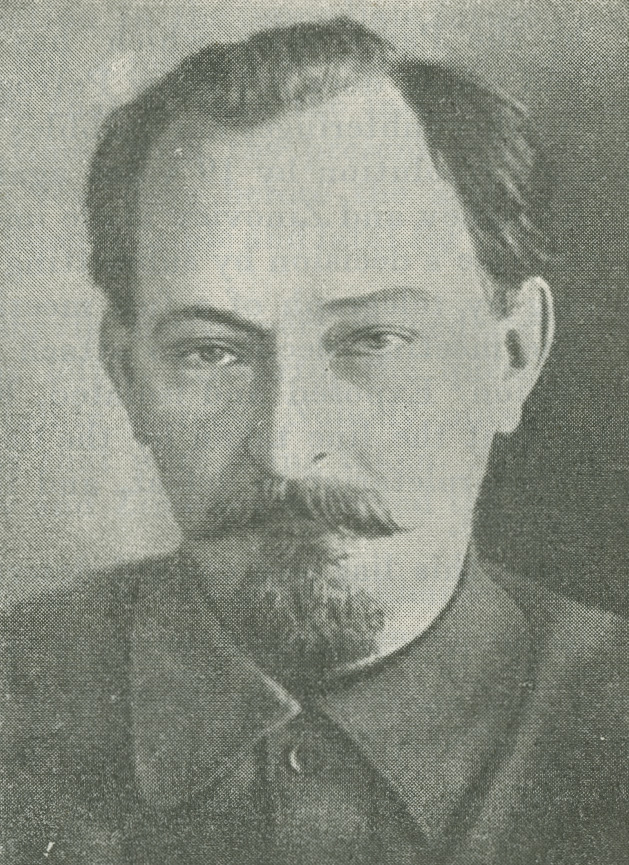
Lenin answered Zinoviev for the third time. In curt, trenchant terms he explained the difference between the new, proletarian revolution and the February bourgeois-democratic revolution, and then moved the following resolution:
“This meeting heartily greets and fully supports the resolution of the Central Committee. It calls upon all the organisations and all the workers and soldiers to make energetic preparations for armed insurrection and to render every support to the organ which the Central Committee is setting up for this purpose, and expresses its full confidence that the Central Committee and its Soviet will in due time indicate the favourable moment and the most expedient methods for taking the offensive.”[17]
The vote was about to be taken on this resolution when Zinoviev rose again and in his shrill, exasperating voice proposed the following motion:
“While not postponing reconnoitring preparatory steps, such actions must be regarded as impermissible until the Bolshevik group at the Congress of Soviets has been consulted.”[18]
Convinced that no amount of wriggling would be of any avail Zinoviev, right at the end of the meeting, took up Trotsky’s position. While not openly opposing Lenin, Trotsky had been secretly trying to sabotage the insurrection and insisting upon its postponement until the meeting of the Congress of Soviets. Now Zinoviev tried to shield himself from the blows of the Bolshevik Party by taking cover behind Trotsky’s Menshevik position.
Several days later Lenin, commenting on Zinoviev’s last quibble, wrote the following:
“. . . Zinoviev, with an innocent air, moved a resolution—which was rejected by the meeting—proposing ‘to take no action before the Bolsheviks who are to arrive for the Congress of Soviets on the 20th are consulted.’
“Just think of it: after the centre has decided on the question of a strike, they propose to a meeting of the rank and file that it be postponed and submitted (by October 20, when the Congress convenes—and that Congress was later postponed . . . the Zinovievs trust the Liebers and Dans), that it be submitted to a body which is not recognised by the Party rules, which has no power over the Central Committee, and which does not know Petrograd.”[19]
Neither subterfuges nor quibbles were of any avail. The meeting adopted Lenin’s resolution by 19 votes against 2, with 4 abstentions.
Kamenev and Zinoviev made one more attempt to hold up the Central Committee’s decision by submitting a statement demanding the immediate calling by telegraph of a full meeting of the Central Committee.
The meeting decided to attach the statement to the minutes without discussion. Exposed and isolated, Kamenev submitted a statement to the effect that the line taken by the Central Committee would lead the Party and the proletariat to defeat, and that he was resigning from the Central Committee.
Thus, this liar and coward deserted his post on the eve of the decisive battle.
With this the meeting ended. The members of the Central Committee went into another room where they decided to set up a Party Centre, consisting of Sverdlov, Dzerzhinsky and Uritsky with Stalin at the head, for the purpose of directing operations during the insurrection. This centre was to be incorporated in the Military Revolutionary Committee in order to guide the insurrection.
The meeting ended just before dawn. The members dispersed as they had come, one at a time. Lenin left last. A gusty wind was blowing and Lenin’s hat and wig were swept off his head. He picked them up and put them on again, without noticing that they had been soiled. The great leader was engrossed in thought about the fate of the revolution.
Thrusting his hands deep down into the pockets of his overcoat Lenin stepped out briskly, turning over in his mind the last problems of the armed insurrection.
[1] “The Present Situation.” Leading Article in Uralsky Rabochy, No. 24, October 29, 1917.
[2] V. I. Lenin, Collected Works, Eng. ed., Vol. XXI, Book I, p. 265. [“Letter To I. T. Smilga”]
[3] “The Workers’ Guard,” Rabochy Put, No. 45, October 25, 1917.
[4] V. I. Lenin, “Meeting of the Central Committee of the R.S.D.L.P., October 29, 1917,” Collected Works, Eng. ed., Vol. XXI, Book II, p. 108.
[5] Ibid., p. 109.
[6] Minutes of Proceedings of the Central Committee of the R.S.D.L.P., August 1917-February 1918, State Publishers, Moscow, 1929, p. 114.
[7] Ibid., p. 117.
[8] Ibid., p. 118.
[9] V. I. Lenin, “A Letter to the Central Committee of the R.S.D.L.P.,” Collected Works, Eng. ed., Vol. XXI, Book II, p. 136.
[10] Minutes of Proceedings of the Central Committee of the R.S.D.L.P., August 1917-February 1918, State Publishers, Moscow, 1929, p. 118.
[11] Ibid., p. 119.
[12] J. Stalin, “Speech at the Meeting of the Central Committee of October 29, 1917,” Lenin and Stalin, 1917, Eng. ed., p. 598.
[13] Minutes of Proceedings of the Central Committee of the R.S.D.L.P., August 1917-February 1918, State Publishers, Moscow, 1929, p. 120.
[14] Ibid., p. 121.
[15] V. I. Lenin, “Meeting of the Central Committee of the R.S.D.L.P., October 29, 1917,” Collected Works, Eng. ed., Vol. XXI, Book II, p. 109.
[16] Minutes of Proceedings of the Central Committee of the R.S.D.L.P., August 1917-February 1918, State Publishers, Moscow, 1929, p. 123.
[17] V. I. Lenin, “Meeting of the Central Committee of the R.S.D.L.P., October 29, 1917,” Collected Works, Eng. ed., Vol. XXI, Book II, p. 110.
[18] Minutes of Proceedings of the Central Committee of the R.S.D.L.P., August 1917-February 1918, State Publishers, Moscow, 1929, p. 125.
[19] V. I. Lenin, “A Letter to the Central Committee of the R.S.D.L.P.,” Collected Works, Eng. ed., Vol. XXI, Book II, p. 136.
Previous: Central Asia
Next: Treachery